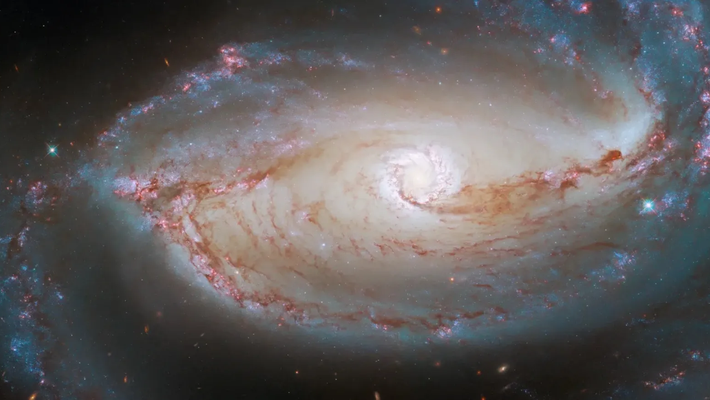Caltech-Led Mission to Study Ultraviolet Sky, Stars, and Stellar Explosions
As NASA explores the unknown in air and space, a new mission to survey ultraviolet light across the sky will provide the agency with more insight into how galaxies and stars evolve. The space telescope, called UVEX (Ultraviolet Explorer), is targeted to launch in 2030 as NASA’s next Astrophysics Medium-Class Explorer mission. The mission is led by Caltech’s Fiona Harrison, the Harold A. Rosen Professor of Physics and the Kent and Joyce Kresa Leadership Chair of the Division of Physics, Mathematics and Astronomy.
“I feel privileged to lead the amazing team that will execute the UVEX mission and its exciting scientific program,” says Harrison, who is also the principal investigator of NASA’s NuSTAR (Nuclear Spectroscopic Telescope Array) mission. “UVEX is a true Explorer mission that will answer questions we can pose today and open vast discovery space for the future.”
In addition to conducting a highly sensitive all-sky survey, UVEX will be able to quickly point toward sources of ultraviolet light in the universe. This will enable it to capture the explosions that follow bursts of gravitational waves caused by merging neutron stars, such as the dramatic event known as GW170817, first detected by LIGO (the Laser Interferometer Gravitational-wave Observatory) in August 2017. The UVEX telescope also will carry an ultraviolet spectrograph to study stellar explosions and massive stars.
“NASA’s UVEX will help us better understand the nature of both nearby and distant galaxies, as well as follow up on dynamic events in our changing universe,” said Nicola Fox, associate administrator for NASA’s Science Mission Directorate “This mission will bring key capabilities in near-and far-ultraviolet light to our fleet of space telescopes, delivering a wealth of survey data that will open new avenues in exploring the secrets of the cosmos.”
Other Caltech team members include: Shri Kulkarni, Mansi Kasliwal, Kareem El-Badry, Christopher Martin, Sterl Phinney, Harry Teplitz, Matthew Graham, and project scientist Brian Grefenstette. Additional team members are listed on the project’s website. The Jet Propulsion Laboratory, managed by Caltech for NASA, will provide key detector and UV-coating technologies at the heart of the UVEX focal plane. Caltech’s IPAC, a premier data center for astrophysics and planetary science, will develop the science analysis pipeline and provide community data access and archiving. The mission is managed by UC Berkeley’s Space Science Laboratory. The spacecraft will be built by Northrop Grumman.

